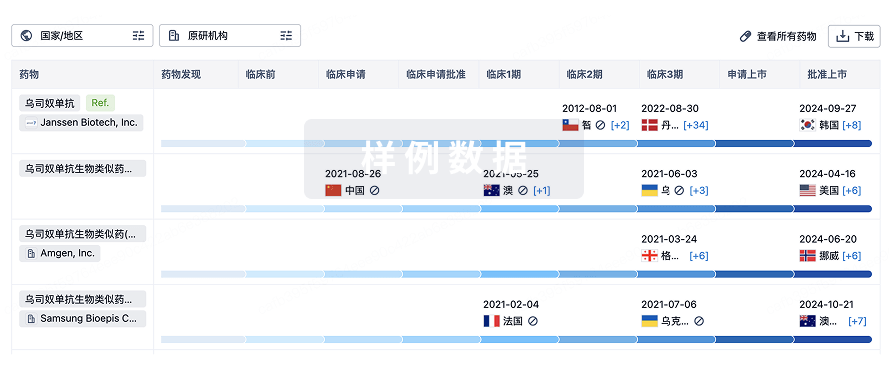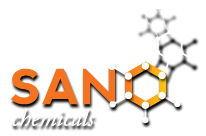预约演示
更新于:2025-08-21
OCF-001
更新于:2025-08-21
概要
基本信息
非在研机构- |
权益机构- |
最高研发阶段临床申请批准 |
首次获批日期- |
最高研发阶段(中国)- |
特殊审评快速通道 (美国)、合格传染病产品 (美国) |
关联
100 项与 OCF-001 相关的临床结果
登录后查看更多信息
100 项与 OCF-001 相关的转化医学
登录后查看更多信息
100 项与 OCF-001 相关的专利(医药)
登录后查看更多信息
31
项与 OCF-001 相关的文献(医药)2025-05-27·mSphere
Antibiofilm properties of 4-hydroxy-3-methyl-2-alkenylquinoline, a novel
Burkholderia
-derived alkaloid
Article
作者: Sweeney, Taylor R. ; Haag, Anthony M. ; Haidacher, Sigmund J. ; Shin, Ronald ; Glogauer, Michael ; Williams, McKinley D. ; Hansanant, Nopakorn ; Orugunty, Ravi ; Tenorio, Abraham ; Barbour, Abdelahhad ; Horvath, Thomas D. ; Younesi, Fereshteh ; Smith, Leif ; Trieu, Sabrina ; Cao, Kevin ; Lu, Shi-En
ABSTRACT:
Biofilms are an important colonization mechanism employed by several microbial species to better establish themselves and monopolize the acquisition of resources across different environs. Some bacteria have evolved specialized metabolites that, when secreted, disrupt the formation and stability of biofilms generated by competing heterospecies, providing the producing organism with an ecological advantage. Soil-derived species are probable candidates for the identification of such compounds, given the intense level of competition that occurs within the terrestrial ecosystem. The MS14 strain of
Burkholderia contaminans
isolated from soil in Mississippi has previously been shown to produce antimicrobial compounds like occidiofungin and ornibactin. In this report, we demonstrate that this strain also produces 4-hydroxy-3-methyl-2-alkenylquinoline (HMAQ-7), an alkaloid-based metabolite structurally similar to others produced by
Burkholderia
. HMAQ-7 was isolated and purified in sufficient quantities to enable the elucidation of its covalent structure and the evaluation of its biological effects. The compound was found to possess a unique ability to inhibit biofilm biosynthesis in several species, including opportunistic pathogens like
Staphylococcus haemolyticus
and within saliva-derived multispecies biofilms. HMAQ-7 also demonstrated an ability to modulate additional cellular behaviors in
Bacillus subtilis,
including motility and sporulation, suggesting that this molecule is important to the interspecies dynamics present across many diverse microenvironments.
IMPORTANCE:
The present study furthers our understanding of the structural complexity and the biological functions of the 2-alkyl-4(1H)-quinolone metabolites produced by
Burkholderia
spp. Low micromolar concentrations of HMAQ-7′ induced observable bacterial growth morphology differences. The antibiofilm properties of the HMAQ-7′ characterized in this study will promote future investigations into possible biological and applied roles. The ability to alter biofilm formation using HMAQ-7′ may facilitate
Burkholderia
spp. colonization in a multitude of environments, that is, aquatic, soil, and possibly during infection. HMAQ may subvert competition by potential competitor species in natural environments of
Burkholderia
spp. and possibly lung infections of cystic fibrosis patients.
2025-04-01·JOURNAL OF MASS SPECTROMETRY
Development of an LC–MS/MS Method for Quantifying Occidiofungin in Rabbit Plasma
Article
作者: Cothrell, Andrew ; Orugunty, Ravi S. ; Smith, Leif
ABSTRACT:
Fungal infections are caused by opportunistic pathogens that can be life threatening and have been growing in prevalence. Many clinically relevant pathogens have resistance to or are developing resistance to the commonly used antifungal treatments. Occidiofungin (OCF) is a unique cyclic lipoglycopeptide with a novel structure that includes noncanonical amino acid in its covalent structure. It exhibits broad spectrum antifungal activity and has activity against drug resistant Candida species. Occidiofungin is a fungicidal compound that has a novel mechanism of action in which it disrupts higher order actin structures. Currently, occidiofungin is being developed for use in treating vulvovaginal candidiasis (VVC) and recurrent vulvovaginal candidiasis (RVVC). This study describes the development and application of a bioanalytical method for the quantification of occidiofungin in rabbit plasma. Method development was performed to quantify occidiofungin in rabbit plasma after intravaginal administration of a hydrogel containing occidiofungin. The method was validated with a linear range of 30–15 000 ng/mL in rabbit plasma. Precision, accuracy, calibration curve linearity, and stability of drug in plasma were established in quality controls. Extract stability, matrix effects, and recovery of drug in the extract were also determined. This study supported a repeat dose toxicity study in rabbits to determine occidiofungin pharmacokinetics and toxicokinetics. The pharmacokinetic and toxicokinetic primarily showed plasma concentrations of occidiofungin below the limit of quantification (BLOQ), suggesting that OCF‐B does not readily cross the vaginal epithelial membrane.
2024-02-23·Journal of natural products
Previously Uncharacterized Variants, OCF-E–OCF-J, of the Antifungal Occidiofungin Produced by Burkholderia contaminans MS14
Article
作者: Cao, Kevin ; Smith, Leif ; Hansanant, Nopakorn ; Cothrell, Andrew ; Ju, Min ; Tenorio, Abraham ; Buhrow, Andrew R ; Shin, Ronald ; Orugunty, Ravi ; Kummari, Evangel ; McNally, Noah ; Williams, McKinley ; Joseph, Thushinari
The rise of multidrug resistant fungal infections highlights the need to identify and develop novel antifungal agents. Occidiofungin is a nonribosomally synthesized glycolipopeptide that has a unique mechanism of action, disrupting actin-mediated functions and inducing cellular apoptosis. Antifungal activity has been observed in vitro against various fungal species, including multidrug resistant Candida auris, and in vivo efficacy has been demonstrated in a murine vulvovaginal candidiasis model. Occidiofungin, a cyclic glycolipopeptide, is composed of eight amino acids and in previous studies, an asparagine residue was assigned at position 7 (ASN7). In this study, new structural variants of occidiofungin have been characterized which have aspartic acid (ASP7), glutamine (GLN7), or glutamic acid (GLU7) at position 7. The side chain of the ASP7 variant contains the only terminal carboxylic acid in the peptide and provides a useful site for selective chemical modifications. Analogues were synthesized at the ASP7 position and tested for antifungal activity. These analogues were shown to be more active as compared to the ASP7 variant against a panel of Candida species. The naturally occurring variants of occidiofungin with a side chain containing a carboxylic acid at the seventh amino acid position can be used to develop semisynthetic analogues with enhanced therapeutic properties.
100 项与 OCF-001 相关的药物交易
登录后查看更多信息
研发状态
10 条进展最快的记录, 后查看更多信息
登录
| 适应症 | 最高研发状态 | 国家/地区 | 公司 | 日期 |
|---|---|---|---|---|
| 真菌病 | 临床申请批准 | 美国 | 2023-03-30 |
登录后查看更多信息
临床结果
临床结果
适应症
分期
评价
查看全部结果
| 研究 | 分期 | 人群特征 | 评价人数 | 分组 | 结果 | 评价 | 发布日期 |
|---|
No Data | |||||||
登录后查看更多信息
转化医学
使用我们的转化医学数据加速您的研究。
登录
或

药物交易
使用我们的药物交易数据加速您的研究。
登录
或

核心专利
使用我们的核心专利数据促进您的研究。
登录
或

临床分析
紧跟全球注册中心的最新临床试验。
登录
或

批准
利用最新的监管批准信息加速您的研究。
登录
或

生物类似药
生物类似药在不同国家/地区的竞争态势。请注意临床1/2期并入临床2期,临床2/3期并入临床3期
登录
或

特殊审评
只需点击几下即可了解关键药物信息。
登录
或

生物医药百科问答
全新生物医药AI Agent 覆盖科研全链路,让突破性发现快人一步
立即开始免费试用!
智慧芽新药情报库是智慧芽专为生命科学人士构建的基于AI的创新药情报平台,助您全方位提升您的研发与决策效率。
立即开始数据试用!
智慧芽新药库数据也通过智慧芽数据服务平台,以API或者数据包形式对外开放,助您更加充分利用智慧芽新药情报信息。
生物序列数据库
生物药研发创新
免费使用
化学结构数据库
小分子化药研发创新
免费使用

